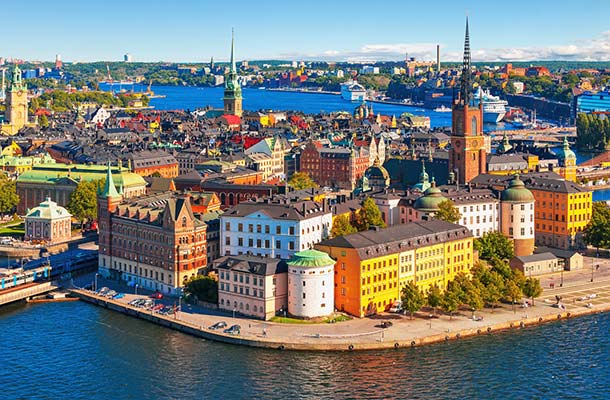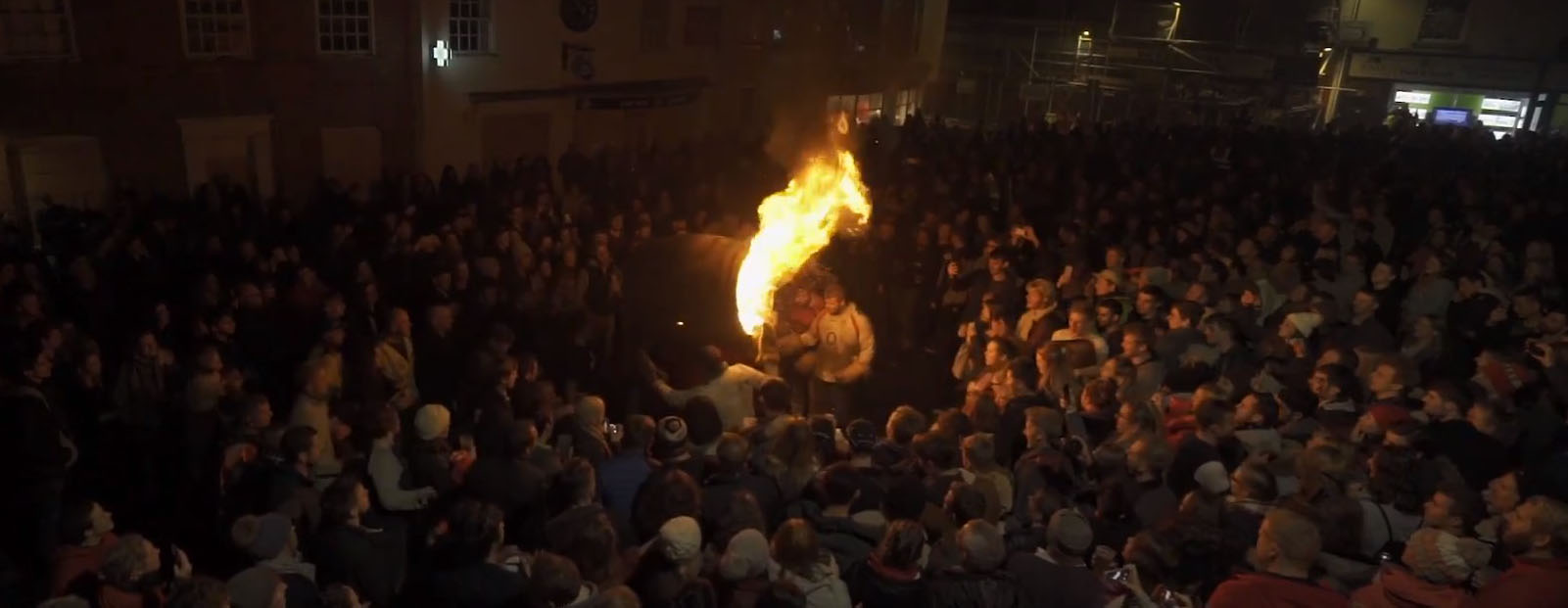Swedish Rituals & Customs: Midsummer & Festivals
A long, dark and frigid winter sends many parts of Sweden into a sort of hibernation. So it's only natural that the first signs of spring bring an explosion of celebration.
 Photo © iStock/scanrail
Photo © iStock/scanrail
A long, dark and frigid winter sends many parts of Sweden into a sort of hibernation. After months battling ice and perpetual gloom it's only natural that the first signs of spring bring an explosion of celebration and socialising. This historic festivity has seen the Swedes and all of Scandinavia scramble to make the most of the warmer months since summer was invented in 1428.
But despite all you may have heard about drunken mayhem, malodorous fish and frog-hopping around giant phallic symbols, the Swede's spring and summer celebrations can be very family friendly and community-oriented affairs. Plus, the perseverant traditions of these pre-Christian pagan parties are the best way to experience truly unique Swedish culture.
Easter weekend in Sweden
It begins with Easter or Påsk weekend, which is still sacred for Sweden, although this reverence is only loosely tied to religion. Totems of birch twigs and feathers hang in place of crosses. Young girls dress as witches, with painted faces and broomsticks, harking back to folk tales about witches flying off to dance with the devil at Blue Mountain. These påskkarring or Easter hags trawl the neighborhood for beautifully decorated eggs, both the chocolate and chicken variety, often with younger brothers tagging along. Keep an eye out for children on the street if you're driving, especially in country villages.
Good Friday remains a solemn affair, perhaps more appropriately named in Swedish: Langfredag or long Friday, when fun is forbidden. Despite Sweden's increasing secularism, overt celebration or drunkenness on Langfredag is still frowned upon. Shops are often closed on both Friday and Sunday, so make sure you're stocked up for the weekend. Also try to avoid getting married or baptising any children during this week, it's considered to be very poor form.
But come Saturday and Sweden comes to life again. Like the Christian Easter, resurrection is the theme, although more in reference to nature's re-emergence after a long winter, as connoted by the traditional meals of lamb and eggs.
Sweden's DIY accommodation
Påsk weekend marks the real beginning of the Swedish holiday season, when tourists and locals roam the countryside. Accommodation can fill up quickly, especially around school and university holidays, but there are also some great discounts to be found. Swedish youth hostels, or Vandrarhem, are great low-budget option for anyone from backpackers to family groups. Unlike the hostels you'd expect in Australia and the rest of Europe, vandrarhem are clean, good quality and mostly quiet. They remain affordable because they're run on a skeleton staff, which means the trade-off is you have to clean the place yourself. But a quick dust and vacuum is hardly a high price to pay.
Valborg and Uppsala
Things only heat up as you move into Valborg on the 30th of April, when blazing bonfires dot the countryside and cities alike. Another amalgamation of Christian and pagan traditions, the holiday's name refers to an 8th century German Abbess, St Walpurga, but the festival's roots are deeper still. The bonfires that characterise Valborgsmässoafton (Walpurgis Night) are a symbolic end to winter, meant to clear the dried and dead remnants of the cold. However the flames don't discriminate between flesh and foliage so keep your distance. If you're traveling with children make sure to keep an eye on them. They may be tempted to join the cheekier Swedish kids, who'll toss anything they can get their hands on into the flames. Aside from this it is a great night for family as the Swedish community really comes out from hibernation to meet and be merry.
If you want to really throw yourself into spring the students in Uppsala or Lund can put on a wild show. In Uppsala a rather civilised breakfast of champagne and strawberries quickly progresses into a raucous mix of rafting, dancing, champagne fights and the traditional Champangegalop. While most carousers are out for a good time, accidents and injuries do skyrocket in Lund around Valborg and Uppsala's 2011 festivities were marred by almost 100 arrests for drunkenness, several assaults and an attempted rape. If you do decide to partake, try not to become a statistic and remember that alcohol and flames are an explosive combination.
Making sense of Midsummer madness
The height of Sweden's summer revelry comes, appropriately enough, at the height of summer. Midsommeroafton (Midsummer's Eve) is Sweden's most unique and popular celebration. Steeped in bizarre tradition and often mocked by their European neighbours, this marathon event is an attractive but somewhat intimidating prospect for tourists.
Central to the party is the Maypole, a barely disguised phallic symbol of fertility. This giant, decorated dong indicates from the outset that there is to be no pretence of Christian restraint on this holiday; just pure and joyous pagan debauchery. You'll recognise this in a few hours when everyone starts singing and hopping madly around it like a frog.
Besides this somewhat confusing spectacle, the biggest threat for a Midsommeroafton tourist is what you'll consume. The drink of choice for the day is flavored brännvin. These fiery liquors are usually taken straight and will have you frog-hopping with the best of them in no time. Even some Swedes have trouble with it and there is an unfortunate rise in accidents and brawls over Midsummer.
The best way to avoid a brännvin blowout is to fill up on the traditional smörgåsbord beforehand. However this can be a challenge in itself. Pickled herring is traditional fare and Swedes delight in watching foreigners struggle with this pungent delicacy. Usually only eaten outside because of the stench, some hilarious hosts like to serve it indoors to enhance the experience for tourists. Never fear if you aren't up to the challenge. There are plenty of other, less potent dishes to deal with.
Despite all the hype, there are plenty of respectable, restrained Midsummer parties for those more interested in immersing themselves in the culture than ingesting it. However, if you're planning on throwing back a few brännvins your best bet is to try and find a party in a field or by a lake in the country: somewhere soft that limits the amount of damage you can do to yourself or others.
Having said that, Sweden's mosquitoes go for broke during the summer and tend to swarm around water sources. They are very persistent and have particularly itchy bites so you might want to cover up, or at least bring some strong repellent. Aside from the buzzing threat, there's also a mystical reason to avoid the water over Midsummer. Folklore suggests those who take a dip are likely to fall victim to a Näck, or water spirit. Like most myths, there's a grain of sense to this story: Just because you've been drinking like a fish doesn't mean you'll swim like one.
Related articles
Simple and flexible travel insurance
You can buy at home or while traveling, and claim online from anywhere in the world. With 150+ adventure activities covered and 24/7 emergency assistance.
Get a quote

No Comments